Southern California’s real estate development and construction companies face unique challenges that go far beyond normal business risks. From seismic activity and wildfire threats to complex regulatory environments, developers and contractors operating in SoCal need comprehensive insurance protection that addresses both common industry exposures and location-specific hazards.

Basic commercial insurance may satisfy minimum requirements, but today’s sophisticated development projects demand specialized coverage that protects against the full spectrum of potential losses. Understanding these essential insurance types can mean the difference between a minor setback and a project-ending catastrophe.
General Liability Insurance: Your First Line of Defense
General liability insurance forms the foundation of any comprehensive commercial insurance portfolio, but for real estate developers and contractors, it’s absolutely critical. This coverage protects against third-party claims for bodily injury, property damage, and personal injury that can arise during construction.
In Southern California’s litigious environment, even minor incidents can lead to significant legal costs. A visitor injured on a construction site, damage to adjacent properties during excavation, or advertising disputes can all trigger general liability claims. Quality coverage should include products-completed operations insurance, which extends protection beyond project completion. That’s essential given California’s extended statute of limitations for construction defects, which can extend up to 10 years for certain claims.
Commercial Property Insurance: Protecting Your Physical Assets
Commercial property insurance protects the physical assets that keep your business running, from office buildings and equipment to materials stored on job sites. However, standard policies often fall short for construction and development operations.
Southern California’s earthquake risk makes seismic coverage a necessity rather than an option. The region’s wildfire activity, as demonstrated by recent devastating seasons, requires specialized coverage for fire-related losses. Additionally, construction projects need builder’s risk insurance, a specialized form of property coverage that protects structures under construction from covered hazards until the project is complete.
Understanding and Managing Risk Through Specialized Coverage
Effective risk management requires understanding that real estate development and construction involve exposures that other businesses never face. Projects often span multiple years, involve numerous subcontractors, and create potential liabilities that can emerge long after completion.
The costliest earthquake in U.S. history was the Northridge, California earthquake of 1994, with insured losses estimated at $15.3 billion. This complexity demands insurance solutions that address both immediate construction risks and long-term liability exposures. Standard commercial policies typically exclude many construction-related activities, making specialized coverage essential for comprehensive protection.
Professional Liability and Errors and Omissions: Protecting Your Expertise
Professional liability insurance, also known as errors and omissions (E&O) coverage, protects against claims arising from professional services and advice. For developers and contractors, this includes coverage for design errors, failure to meet specifications, and inadequate project management.
California’s strict construction standards and environmental regulations create additional exposure to professional liability claims. When projects fail to meet building codes, environmental requirements, or client expectations, professional liability coverage provides essential protection against resulting lawsuits and financial losses.
Workers’ Compensation: Beyond Basic Requirements
While California requires workers’ compensation coverage for most businesses, construction and development operations need enhanced protection. The industry’s high injury rates and potential for catastrophic accidents make robust workers’ comp coverage essential.
Quality policies should include coverage for independent contractors, protection against gaps in subcontractor coverage, and adequate limits for potential catastrophic claims. Given construction’s inherent dangers, premium coverage often provides better claims management and safety resources that can prevent losses before they occur.
Environmental and Pollution Liability: Addressing Hidden Hazards
Environmental liability represents another significant exposure in real estate development. Southern California’s industrial history means many development sites carry potential environmental contamination risks.
Environmental and pollution liability insurance protects against cleanup costs, third-party claims, and regulatory actions related to pollution incidents. This coverage is particularly crucial for projects involving older properties, industrial sites, or areas near historical contamination sources. The EPA’s Superfund National Priorities List includes numerous California sites, highlighting the region’s environmental legacy issues. Standard commercial insurance policies typically exclude pollution-related claims, making specialized coverage essential.
Business Interruption: Maintaining Cash Flow During Disruptions
Business interruption insurance compensates for lost income when covered events prevent normal business operations. For construction projects operating on tight schedules and thin margins, delays can be financially devastating.
Southern California’s natural disaster risks, from earthquakes and wildfires to mudslides, make business interruption coverage particularly valuable. Recent wildfire seasons have caused unprecedented disruptions to construction schedules and supply chains. Quality policies should cover not just direct property damage but also civil authority actions, supply chain disruptions, and extended period expenses that can arise from regional disasters.
The Takeaway: Building Comprehensive Protection
The interconnected nature of these coverage types means that gaps in any area can create significant exposures for your construction or development project. A comprehensive commercial insurance program addresses all these areas while providing adequate limits and appropriate policy terms for your specific operations.
Working with insurance professionals who understand the unique challenges facing Southern California’s real estate and construction industries ensures that your coverage keeps pace with evolving risks and regulations.
Your projects represent significant investments of time, money, and reputation. To make sure your next development or construction project is fully protected against the region’s unique challenges, reach out to qualified insurance professionals today. The right coverage protects not just individual projects, but your entire business’s long-term success.

